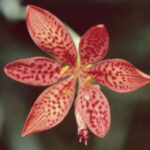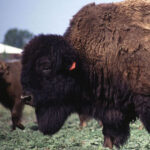I originally chose this plant simply because the tag read: “Deer Resistant.” Since we had just moved to a neighborhood exactly one mile from Buffalo Mountain Park (located in Johnson City, TN) and since deer – as well as coyotes and bears – liked to occasionally visit, I thought a deer-resistant plant was a prudent choice. (I would have to find other ways to discourage the coyotes and bears.) Little did I know that the Stokes’ aster would become one of my favorite plants.
Stokes’ aster (Stokesia laevis) is a hardy perennial (Zones 5-9) with an extremely long blooming period. Its flowers bloom on 12-20-inch tall sturdy stems, which rise from the large clumps of basel leaves. I like to describe the blooms as “raggedy.” Others say they are “fuzzy.” Whichever adjective you choose, neither adequately describes the striking 4-inch blooms that can be found in shades of blue and lavender, as well as, pink and white. Stokes’ asters bloom from late summer through the fall; however, mine usually begin to bloom about mid-summer. Be sure to remove the spent flowers to extend the bloom period.
There are several varieties of Stokes’ asters in which you might be interested. ‘Blue Danube,’ which is the variety I have, has lavender-blue flowers. The flowers of ‘Blue Moon’ are more of a hyacinth-blue, while ‘Wyoming’ is the deepest blue. For a different look, choose ‘Silver Moon,’ which has creamy-white flowers.
Plant your Stokes’ asters in rich, well-drained soil in full sun. I can attest to the fact that this plant is not happy with the least bit of shade. (I had to move one from a spot where it only received morning sun to a spot where it received sun for the entire day. It has really flourished since the move.) They are also drought-tolerant, which makes them a good choice for xeriscapes.
Stokes’ asters should be divided about every four years or when the clumps become too crowded. Mulch in the winter, especially in colder climes. Cut back all of the dead at the end of the season; however, in areas with warmer winters, the leaves will be evergreen.
If you are looking for a showy, profusely blooming plant for your garden, you need look no further than the Stokes’ aster. And you will not have to worry about the deer eating it.
For additional information on and photos of Stokes’ asters, visit Gay Gardener/Garden Spot.







